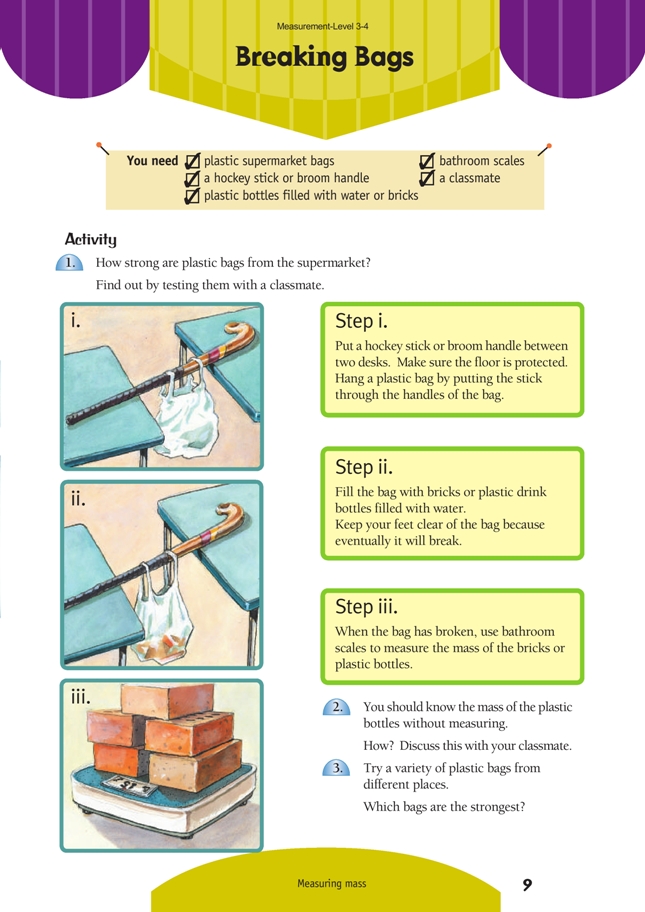This is a level 3 measurement activity from the Figure it Out series.
A PDF of the student activity is included.
Click on the image to enlarge it. Click again to close. Download PDF (226 KB)
measure mass
bathroom scales
a hockey stick or broom handle
plastic bottles filled with water, or bricks
FIO, Level 3-4, Measurement, Breaking Bags, page 9
classmate
Many shoppers complain that plastic shopping bags don’t hold very much before they break. Here is an opportunity to test out an interesting everyday situation, even though it may not be strictly realistic because the bag doesn’t have to be lifted or the handles subjected to a moving, jiggling load.
This experiment may have some surprising results. Some bags can hold as much as 18 kilograms of carefully packed bricks before giving way. You will need to supervise this activity carefully so that the students do not get injured if bricks fall out of the plastic bag. One alternative is to use packets of rice. Another way is to fill small freezer bags with sand until the bag and the sand have a mass of 250 grams.
Results will vary widely. If the students wrap the bricks in newspaper, as suggested, they will need to include the mass of the newspaper. The way the bricks are placed or dropped into the bag will affect the result. Placing bricks with a corner poking into the plastic at the bottom of the bag may also cause early breakage. Does the placement of the handles wide apart or close together change the result? These ideas could be explored in an extended investigation.
Question 2 draws on the students’ knowledge that 1 litre of water has a mass of 1 kilogram. So, if they are using 1.5 litre plastic bottles filled with water, the mass will be 1.5 kilograms (with a little extra for the mass of the plastic bottle).
In question 3, try and have the students keep as many aspects as possible the same. Use the same bricks, rocks, or water bottles, put them in the bag in the same way, and have the handles in the same positions. This should highlight the idea of fair testing by trying to have everything constant except the variable being tested. A good question to conclude this activity would be, “Did we do a fair test?” and have the students explain their views.
Answers to Activity
1. Practical activity
2. 1 L of water = 1 kg. You can use this to work out the mass of a bottle without weighing the bottle.
3. Practical activity. Results will vary.
